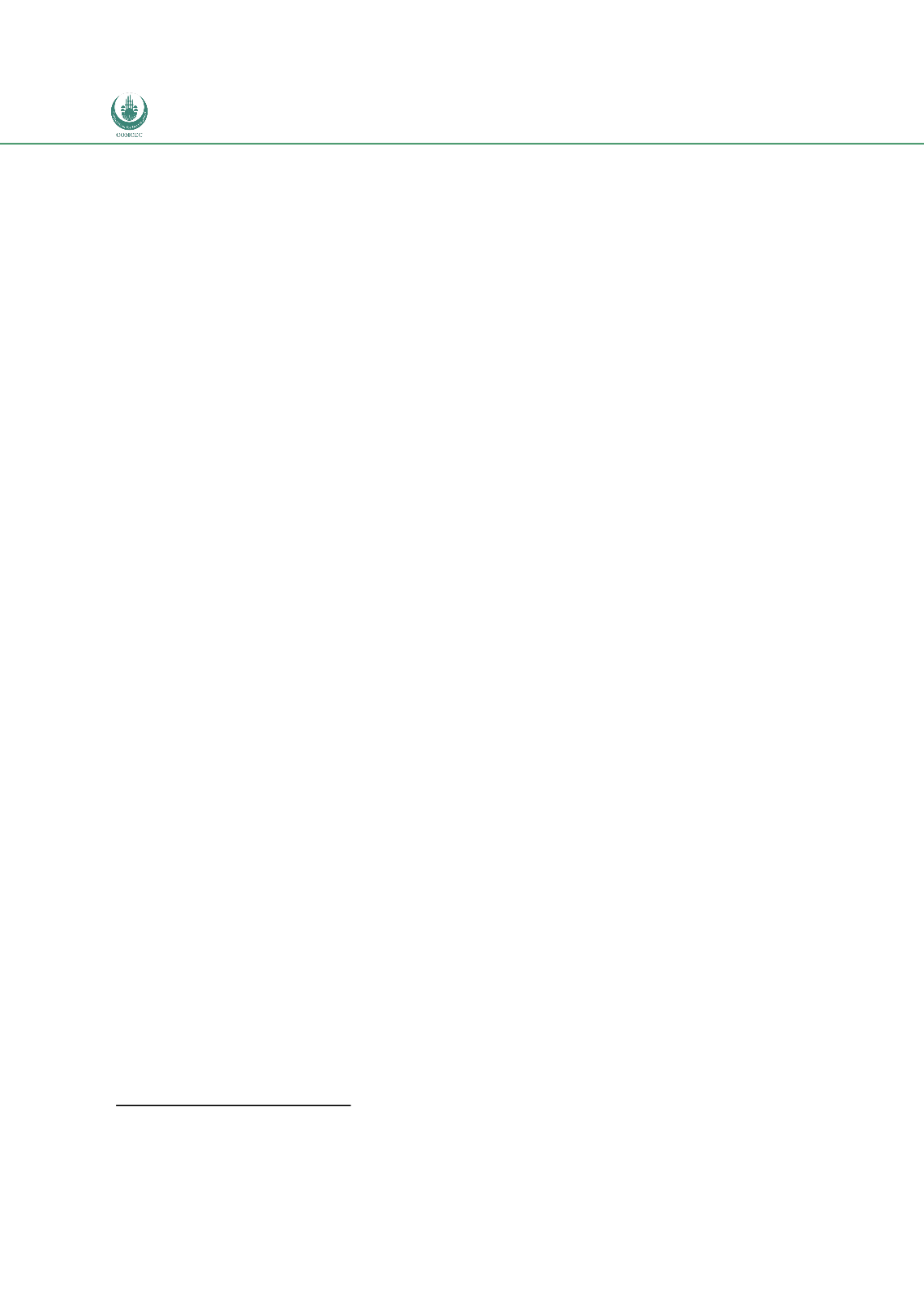

Preferential Trade Agreements and Trade Liberalization Efforts in the OIC Member States
With Special Emphasis on the TPS-OIC
130
With regard to non-tariff measures parties of the agreement are to notify them to the SAARC
Secretariat with a view of review by the Committee of Experts that may recommend their
removal in the least trade restrictive manner. Trade facilitation is mentioned in the agreement
with a rather weak commitment that parties agree to consider measures in this area. In 2010,
SAARC Agreement on Trade in Services (SATIS) was signed entering into force in end-2012,
but specific commitments are still negotiated. Hence, SATIS is not effectively implemented yet.
The share of total intra-SAARC trade remains low, at around 6% on the side of exports and
recently falling to below 2% of imports. This, however, owes to very large heterogeneity in
economic size of members with India accounting for 85-90% of total SAARC trade. For smaller
SAARC members their share of trade within SAARC is significant, although the SAFTA generally
does not appear to have any visible impact on relative intensity of trade relations within the
bloc. Also, significant trade flows between India and Pakistan and some other SAARC partners
take place via United Arab Emirates (especially Dubai) so that the figures may underestimate
actual shares of intra-SAARC trade.
33
Pakistan has a more diversified export structure to SAARC than other OIC members with
cotton (HS52), salt, sulphur, earth, stone, plaster, lime (HS25) and several agricultural
products among main exports in 2013. Limited data availability does not allow for an analysis
of trade concentration over time. Afghanistan’s exports to SAARC partners mainly consists of
agricultural products (especially edible fruits, nuts (HS08) and lac, gum, raisins, vegetable saps
(HS09)) and carpets and other textile coverings (HS57). Bangladesh’ 2005 main exports to
SAARC members included textile fibres (HS53), inorganic chemicals, precious metal com-
pound (HS28), other made textile articles (HS63) as well as some agricultural products. Fish
(HS03) by far dominate Maldives’ exports to the FTA partners with a share of around 80.
33
See
http://www.mei.edu/content/uae%E2%80%99s-strategic-trade-partnership-asia-focus-dubai
















